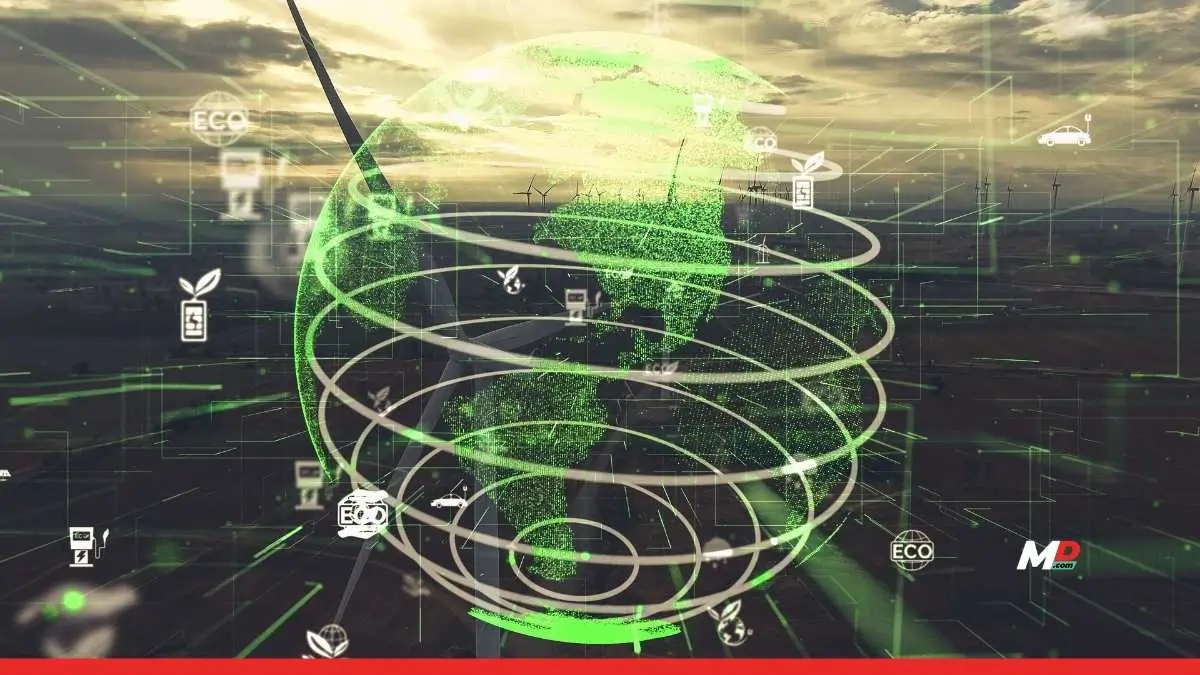Environment
7 Breakthroughs Reshaping The Future of Climate Tech
Published
6 months agoon

Climate technology has reached an inflection point in 2025, powered by a fusion of rapid innovation, sustained investment, and global urgency. This year, we are witnessing breakthroughs that once seemed distant—with bold advances in energy generation, artificial intelligence, and sustainable resource management now being deployed at real-world scale.
These are not just projects in academic journals or isolated pilots: the technologies shaping climate action today are moving swiftly into the mainstream, offering new hope and hard data that climate resilience and decarbonization are achievable.
Clean Energy Innovation
The global push towards renewable energy has reached unprecedented momentum, celebrating new milestones in both scale and sophistication. Solar and wind farms are more efficient and affordable than ever, while the adoption of hydroelectric solutions continues in regions suited to tapping natural water flows.
What’s truly groundbreaking this year, though, are advances in storage—particularly with the arrival of high-capacity, safer solid-state batteries, which are enabling renewable energy to be stored and distributed far more reliably. In an exciting niche, researchers have successfully generated clean power from rainwater droplets, hinting at new micro-energy possibilities in urban and rural settings alike.
Numbers reflect the shift: renewables have climbed to 30% of global energy production, and are projected to hit 38% next year. The investments are following the vision, with funding for battery startups alone up more than 40% this year. The combined effect is a more resilient, distributed, and sustainable grid—offering governments and businesses a credible path away from fossil dependency.
AI and Machine Learning for Decarbonization
Artificial intelligence has quickly become indispensable in climate innovation, moving beyond buzzword status to real-world impact in the fight against global warming. This year, AI-powered tools are automating mountains of data required for climate reporting—transforming the way companies meet Environmental, Social, and Governance (ESG) standards.
In energy systems, predictive analytics are driving efficiencies, cutting waste and emissions, and giving grid operators new agility. Startups working at the intersection of green hydrogen production and carbon removal have leveraged AI to drive costs down by as much as 20%. Venture capital has responded in kind, with a 30% leap in funding for AI-led climate companies in 2025 alone.
The result? AI is not only accelerating the pace of decarbonization but expanding the toolkit for organizations aiming to hit net-zero with both speed and precision.
Carbon Capture and Utilization Solutions
As the world struggles to lower atmospheric CO₂, attention is shifting to cutting-edge solutions that capture carbon directly from the air and industrial sites—then put it to new use.
This year saw the debut of more energy-efficient chemical and mechanical processes, some guided by AI, that boost extraction rates while slashing costs. Instead of simply storing the CO₂, innovators are turning captured emissions into synthetic fuels, construction materials, and other valuable commodities. European e-fuel projects secured nearly €70 million, and modular carbon capture units—increasingly affordable—are being field-tested at industrial facilities worldwide. Deployment costs have fallen by nearly a third since 2022. Such advances are accelerating a circular economy dynamic, enabling once-polluting sectors to become part of the solution.
Green Hydrogen
Green hydrogen, long described as a “fuel of the future,” is increasingly becoming a fuel for today—particularly for hard-to-abate industries such as steel, shipping, and aviation. Technologies powered by AI are optimizing production processes, making it possible to generate hydrogen from renewable sources at a fraction of historical costs.
Global finance for green hydrogen exceeded $6.4 billion this year, up from $4.2 billion in 2024, a leap reflecting the sector’s commercial viability. Efficiency gains, driven in part by predictive algorithms and smart systems, are further lowering the cost curve, helping green hydrogen transition from experimental pilot to full-scale industrial player. With this, some of the toughest climate challenges—cleaning up heavy industry—are finally meeting practical, scalable solutions.
AI for Climate Resilience and Prediction
In an era of escalating climate risks, predictive power is everything. AI and machine learning are giving communities and governments the tools they need to model extreme weather events, anticipate risk, and plan adaptive infrastructure before disaster strikes. In 2025, real-time climate modeling systems are now embedded in disaster response protocols for a dozen countries, while private sector startups can forecast severe weather events with up to 85% accuracy.
Initiatives like the US-Japan flood resilience project combine traditional weather data with real-time, crowdsourced intelligence to protect vulnerable communities. By making resilience “smarter,” these technologies are directly reducing disaster-related economic losses and, more importantly, saving lives.
Circular Economy and Advanced Recycling
Resource efficiency is being redefined by breakthroughs in recycling technologies and eco-friendly materials. AI-driven robotics now sort waste streams with unparalleled accuracy and speed, dramatically improving recycling rates and cutting landfill dependency.
This year, robotic recycling has boosted plant efficiency by 32%. Meanwhile, new bioplastics—made from plant-based and biodegradable compounds—now account for 7% of global plastics output, a steady rise from just a few years ago. These innovations close the loop, making it both profitable and practical to repurpose what was once destined for waste, and signaling a systemic shift toward true circular economies.
Smart Grids, IoT, and Data Transparency
The infrastructure behind our green future is also getting much smarter. Internet of Things (IoT) sensors and advanced smart grids are optimizing how, when, and where energy is consumed, making renewables easier to integrate and manage. The market for smart grid solutions has jumped by double digits this year, with new installations across Asia, Europe, and the Americas.
Simultaneously, the rise of blockchain and decentralized ledgers are giving new transparency and trust to carbon trading, certification, and supply chains. This transparency is not only driving efficiency but facilitating record investment and cross-sector collaboration, moving us ever closer to a truly sustainable, trusted energy system.
Final Thoughts
Taken together, these seven breakthrough developments show that climate technology isn’t an abstract ideal—it’s a tangible, multi-sector revolution already reshaping our world. The pace and promise of these advances offer a blueprint for practical optimism: a future where human ingenuity, smart investment, and environmental purpose combine to drive real, scalable climate action.
You may like
-


The silent, stony guardians of Idar
-


CredAble and Citi announce a global tech partnership to digitise trade finance and e-invoice validation
-


Thyrocare Appoints Rajdeep Panwar as Chief Commercial Officer
-


Structure of Enterprise Scale Digital Transformation
-


C-Suite Conversations with Rajesh Goenka, CEO of Rashi Peripherals
-


Zoya, Diversity and Inclusion Lead at Godrej Properties


